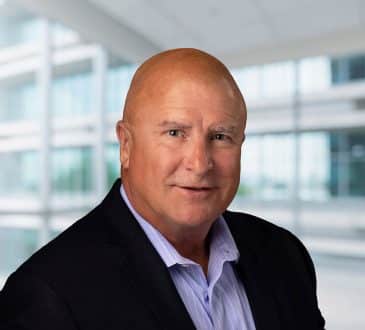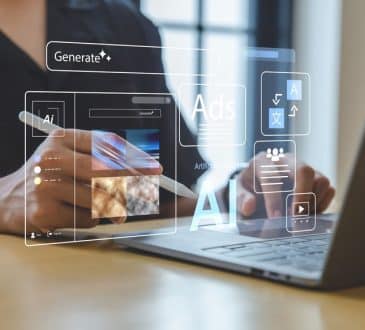From Boardrooms to Finish Lines: Running Coach Stewart Skloss Explains the Rise of Executives Embracing Competitive Running

Competitive running is growing in popularity among one very specific cohort — high-powered executives. As physical trainer Stewart Skloss explains, an increasing number of executives have been embracing competitive running, getting out of the boardroom and hitting the pavement.
There are myriad reasons why this trend makes sense.
“Executives are often highly-motivated people, and competitive running provides them with another avenue to pursue personal challenges that are outside a business environment,” Stewart Skloss says. “In addition, running offers a number of other benefits, including physical fitness, of course, but also stress relief, which many of these executives desperately need.”
Below, Stewart Skloss examines how the rise of popularity of competitive running among executives, how it’s affecting the business world’s approach to wellness and leadership, while highlighting real-world success stories.
Gym CEO Makes Running an Integral Part of His Week
Glenn Earlam ran marathons in his youth. Today, at 51 years old, the CEO of the David Lloyd chain of gyms is still dedicated to running.
On average, Earlam says that he runs at least three times each week, running anywhere from three to six miles every time. Sometimes, he ventures out by himself, while other times, he hits the ground running with his grown children.
For Earlam, running isn’t just a hobby; it’s something he considers to be integral to not only his personal health, but his “corporate health” as well. He says that running allows him the space to breathe and not have to worry about the £360 million business with almost 9,000 employees that he runs.
A few years ago, he spoke to Runner’s World, saying that if he weren’t able to run outside and get fresh air to clear his head, he would “pretty quickly” wear down.
“It’s a crucial part of the balance in my life, and that goes for a lot of CEOs I know,” he said.
In addition to running himself and training for the London Marathon, Earlam also invited his business’ “transformation group,” which includes employees who are in the top tier of the organizational chart — and about 50 people have signed up to join.
Creative Agency CEO Integrates Intense Workouts
David Skloss also points to another example of an executive who integrates running — and intense workouts — into his daily routine. The founding partner and CEO of creative agency Iris Worldwide, Ian Millner, works out every morning in the gym located in his company’s office.
The nearly 400 employees who work at the company’s London location — there are 1,000 employees across 14 offices worldwide — are now used to seeing him do this every morning. He works with a wellness director, who runs him through circuits, boxing and sprint training.
While Millner was active in his youth, he’s making sure to stay that way at age 47. He told Runner’s World that it’s something that many of his peers in the business world are doing, too.
According to Millner, there has been a significant change in the culture of executives. This transformation is partly due to a decrease in the influence of middle-aged men in these roles.
Additionally, health concerns, such as heart disease and the impact of stress on it, have gained more attention. These factors are interrelated. Nowadays, it’s not unusual to observe high-ranking individuals engaging in activities like running, cycling, and triathlon for extended periods.
Correlation Between Running and Executive Success
A study from a few years ago suggested that there is a direct correlation between running marathons and success in the executive world.
The research, conducted by the Social Science Research Network, found that CEOs who ran marathons had 5% greater value to their organizations. The researchers analyzed the 15 largest marathons in the U.S., looking for CEOs at S&P 1500 companies.
According to the research, 6% of the CEOs from these companies completed at least one marathon from 2001 to 2011. More recently, those numbers have increased as well, up to around 7% to 8% of all CEOs in that cohort.
It wasn’t just that these high-powered CEOs completed marathons, though. It’s that the most profound positive impacts of the completed marathons occurred in the cases where the CEO in questions was above the median age and tenure at their company. In other words, these CEOs would be expected to have a particularly full workload.
The data led researchers Florian Sonnenburg and Peter Limbach to conclude that, because of its capacity to mitigate the impact of stress and its beneficial influence on cognitive abilities, the executive management functions, and work effectiveness, physical fitness ought to hold a significant position for CEOs.
This is particularly relevant as their roles involve elevated and dynamic requirements, extensive decision-making scrutinized by the media, and considerable stress.
Other Business Benefits of Competitive Running
Stewart Skloss points out that there are many ways that competitive running can improve an executive’s performance in the workplace.
For one, competitive running is very challenging and physical. In order to run long distances, or to engage in high-intensity physical activity, you need to be tough and resilient. Those traits help you overcome the mental and physical hurdles you’re bound to encounter during the activity.
Not surprisingly, these are two traits that are essential for success in the business world, too. Executives who are tough and resilient are able to stare down challenges, look at them from new angles and power through even when they might want to quit.
Competitive running also has myriad positive physical benefits, including improved endurance, strength, weight management and cardiovascular fitness. All of this helps executives be physically healthy, which provides them with the extra energy and focus they need to make it through their hectic days.
What’s more, Stewart Skloss says these physical benefits also have a trickle-down effect on mental wellness — which is one of the most overlooked, yet important aspects of successful executives.
Competitive running directly helps with reducing stress. Plus, the physical benefits have a direct effect on preventing chronic diseases, anxiety, depression and more ailments.
It’s no wonder, then, that competitive running is exploding in popularity among executives.
More Information on Stewart Skloss
Stewart Skloss, a dedicated fitness coach hailing from Austin with a specialization in running, empowers individuals to realize their fitness objectives and surpass their previous achievements. Despite having retired from competitive racing, Skloss leverages his knowledge to assist leading participants in diverse endurance competitions.
His approachable coaching methodology and unwavering commitment to his clients have garnered him extensive respect within the fitness sphere. Take the opportunity to participate in a complimentary run with him and encounter his motivating mentorship directly.
Have you read?
Ranking: Richest Golfers in the World, 2023.
These Largest Cities Will Face Extreme Climate Change Threats.
These All-American Football Movies Inspired CEOs and Management Consultants The Most.
These Are Most Disliked Companies in America, 2023.
Report: Countries That Attract the Most International Migrants.
Bring the best of the CEOWORLD magazine's global journalism to audiences in the United States and around the world. - Add CEOWORLD magazine to your Google News feed.
Follow CEOWORLD magazine headlines on: Google News, LinkedIn, Twitter, and Facebook.
Copyright 2025 The CEOWORLD magazine. All rights reserved. This material (and any extract from it) must not be copied, redistributed or placed on any website, without CEOWORLD magazine' prior written consent. For media queries, please contact: info@ceoworld.biz











